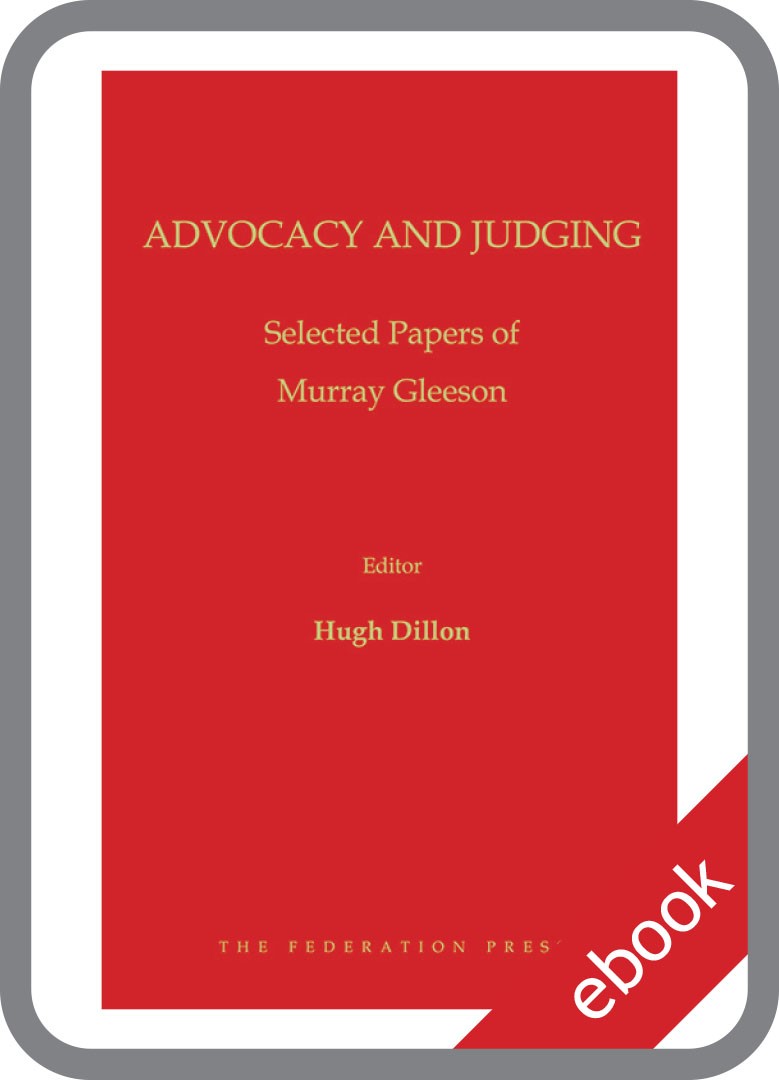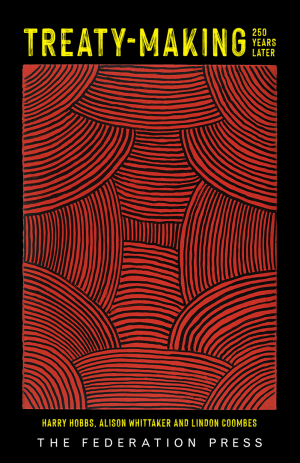This volume of speeches by Murray Gleeson, who served as Chief Justice of New South Wales, then of Australia, for two decades, is, as James Spigelman has put it in his foreword, “a testament to judicial leadership”. While his judgments are his most enduring and primary contribution to the law, in hundreds of occasional speeches he explained the role and importance of the rule of law, and of the institutions through which it is maintained.
Although Murray Gleeson is known as a judge, he is also one of our great legal writers. The selected papers are models of elegant expression, clarity of thought, deep contemplation and scholarship. They cover several broad themes: the rule of law, advocacy, judging, legal history, the judiciary as an arm of government, the application of legal principle, and international commercial arbitration.
As James Spigelman acutely observes, Murray Gleeson’s patient and seemingly tireless effort in explaining the significance of the rule of law and legal institutions is “a critical aspect of judicial leadership. That is particularly so in an era, such as the period covered herein, when institutions are being attacked and, even, subverted”. These speeches are part of the legacy that Murray Gleeson has bequeathed to his successors in the law and to the Australian community.
From the Book Launch Advocacy and Judging: Selected Papers of Murray Gleeson, address by The Hon Susan Kiefel AC, Chief Justice of the High Court, 8 September 2017…
“It is an honour to be invited to launch this book and to say something about it and its author with whom I had the good fortune to serve on the High Court before his retirement. …
A good public speaker is someone who is able to interest his or her audience in what is said and to stimulate thinking on a topic. These aims can be difficult to achieve if the speaker is not himself or herself interested in the topic. The depth of thought given to topics such as public confidence in the judiciary, judicial legitimacy, the rule of law and legality in this collection leave the reader in no doubt that they are regarded as matters of high importance by the author.
Others have said that this book will be a great resource and I agree. I have often quoted from the former Chief Justice’s papers because they so often contain an insight which cannot be better and more succinctly stated.” Read Launch Speech…
Foreword by the Hon James Spigelman AC
Preface
Table of Cases
Table of Statutes
1. A Core Value
2. Advocacy
3. A Judicial Perspective on Cross-Examination
4. Advocacy and Judging
5. Judging the Judges
6. Judicial Selection and Training: Two Sides of the One Coin
7. A Changing Judiciary
8. Out of Touch or Out of Reach?
9. The Judicial Method: Essentials and Inessentials
10. Who Do Judges Think They Are?
11. Judicial Legitimacy
12. Australia’s Contribution to the Common Law
13. The Constitutional Decisions of the Founding Fathers
14. The Centenary of the High Court: Lessons from History
15. The Privy Council – An Australian Perspective
16. The Birth, Life and Death of Section 74
17. Legality – Spirit and Principle
18. Legal Oil and Political Vinegar
19. Magna Carta – History and Myth
20. Courts and the Rule of Law
21. Individualised Justice – the Holy Grail
22. The Future of Civil Justice – Adjudication or Dispute Resolution?
23. The Purpose of Litigation
24. Legal Interpretation – The Bounds of Legitimacy
25. Donoghue v Stevenson
26. Presuming Innocence
27. The Objectivity of Contractual Interpretation
28. Finality
29. Suing Governments
30. Transnational Litigation – Forensic Pathologies
31. Evidence in International Commercial Arbitrations: Some Issues
32. Some Legal Scenery
33. Law and Contextual Change
Index
This book consists of 33 chapters based on addresses given by Gleeson over several decades in the late 20th and early 21st centuries. They were delivered not only in Australian cities but also in New York, Singapore, London, Dunedin, Hong Kong and San Francisco. Most were delivered when he was chief Justice of the Supreme Court of New South Wales (1988-1998), and the next decade when he was chief justice of the High Court of Australia (1998- 2008). He was known as “smiler”, an ironic title based on his serious disposition.
Most of Gleeson’s analysis is contemporary. Some, however, will scarcely survive current developments. Chapter 6 deals with judicial selection and training.
He remarks that the number of women
who reach the top of the profession is
still relatively modest compared with the numbers who enter law school. The remarks were made in 2003, and some significant appointments of women to senior judicial positions have occurred since then.
Gleeson regards Donoghue v Stevenson as the most influential common law decision in the 20th century and the Engineer’s case as one of the most influential decisions given by the High Court. His comparisons with other countries’ jurisprudence such as that in New Zealand are interesting. He points out that the law of tort was replaced in New Zealand by a system of social insurance, thereby putting an end to a kind of litigation that still constitutes a substantial part of the business of Australian courts.
Graham Fricke, InPrint, Law Institute Journal Victoria, Jan/Feb 2018
This work contains 33 papers authored by the Honourable Murray Gleeson AC during the period 1979 to 2015, covering a range of legal topics relevant to the practice of barristers and Australian law more generally.
As the title of the compilation suggests, many of the papers principally focus upon aspects of advocacy or the role and work of judges. These papers address topics such as the function and method of advocacy, cross-examination, judicial method, judicial selection and training, the nature of the judiciary, qualities necessary for judicial activity, the impact of the Constitution and legislation upon such activity and the importance of public confidence in the judiciary.
Aside from those papers that address those subjects as their principal focus, all of the selected papers address topics fundamental to the work of barristers and judges.
Given that the earliest of these papers was delivered 38 years ago, and many of the papers contain a careful recitation of the historical and legal development of the relevant topic, the book in and of itself will contribute to the safeguarding of a collective memory in respect of the issues with which it is concerned.
This is book is an indispensable resource for Australian lawyers, particularly barristers, and will also be welcomed by those with an interest in Australian legal history or the judiciary. Read full review…
Victoria Brigden, Bar News, NSW Bar Association, Summer 2017







